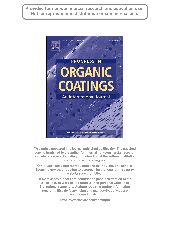摘要
Highly dispersible zirconia (ZrO(2)) nanocrystals were functionalized with gamma-methacryloxypropyltrimethoxysilane (MPS) and dispersed in trimethylol propane triacrylate (TMPTA), 1,6-hexandiol diacrylate (HDDA), tripropyleneglycol diacrylate (TPGDA) and aliphatic polyurethane oligomer (PU)/TPGDA mixtures, respectively. The dispersion behavior of MPS-functionalized ZrO(2) (MPS-ZrO(2)) as well as its mechanical reinforcement for the PU/TPGDA matrixes was investigated. it was found that the dispersion of MPS-ZrO(2) nanoparticles in UV-curable formulation strongly depends on the ZrO(2) load, the grafting density of MPS, the composition of organic matrix and the type of monomer. A critical ZrO(2) load beyond which phase separation of MPS-ZrO(2) nanoparticles takes place exists for all cases. MPS-ZrO(2) nanoparticles are more efficient to improve the pendulum hardness and scratch resistance of PU/TPGDA-based coatings that contains higher amount of TPGDA, being presumably due to quicker increase of the cross-linking density of the coatings. Additionally, a completely transparent TPGDA-based nanocomposite coating with ZrO(2) load of as high as 60 wt.% can be obtained, and has absolutely high refractive index of 1.78.
- 出版日期2010-3
- 单位复旦大学
